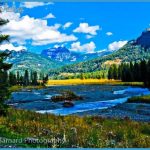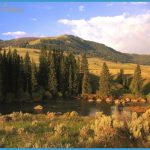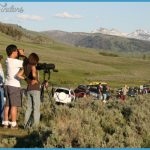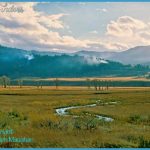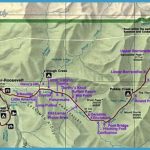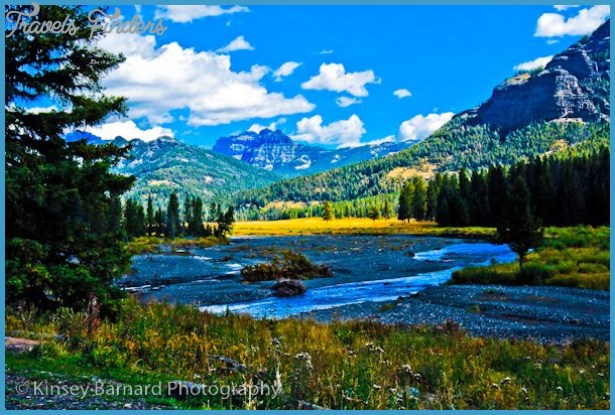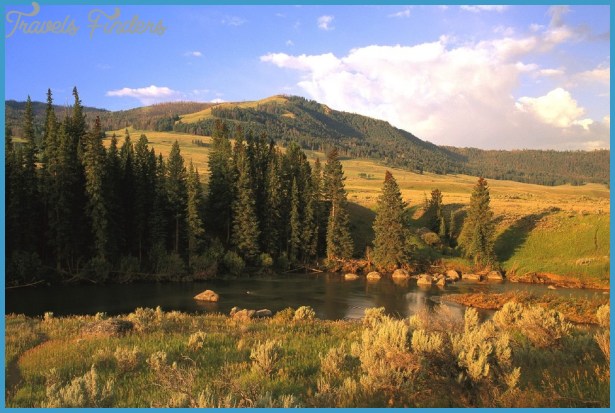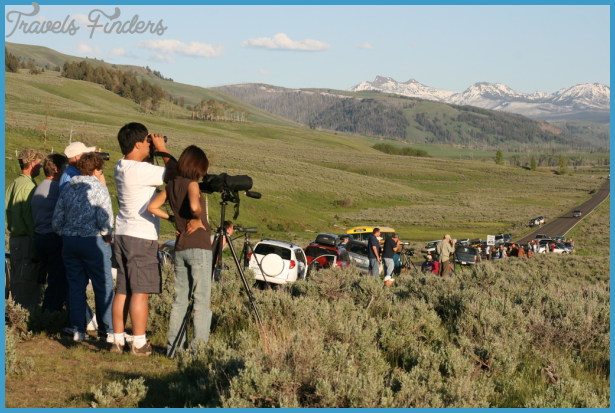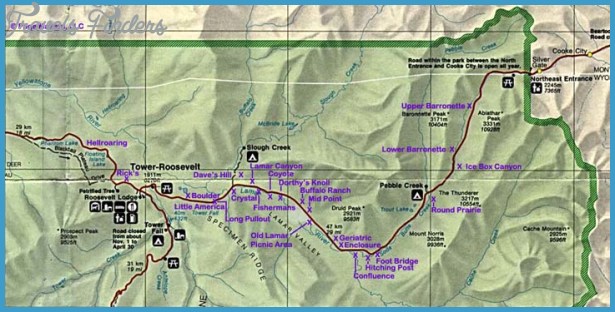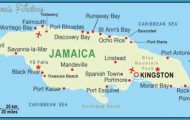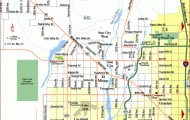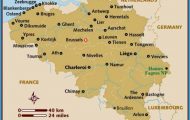Valley The glacier-carved Lamar Valley entered the historical record as far back as 1836 in Journal of a Trapper by Osborne Russell. He praised the Secluded Valley for its wild romantic scenery. Evening light brings forth a particularly beautiful luster. The Lamar is a long river that originates on the eastern boundary of the park. First called the East Fork of the Yellowstone, in 1885 it was ocially named for President Grover Cleveland’s secretary of the interior, who bore the melodious classical name Lucius Quintus Cincinnatus Lamar. As interior secretary, Lamar was a good friend to Yellowstone. He later became an associate justice of the Supreme Court. Death Gulch Up Cache Creek, above where it enters the Lamar River, is an interesting hot springs area. Located about 5 miles from the road and across the creek from the trail, the area has been called Death Gulch since 1888, when geologist Walter Weed discovered that numerous animals had died there from inhaling poisonous gases.
About 15 years later the hot springs in Death Gulch were named Wahb Springs after a fictional grizzly bear that met his end there in Biography of a Grizzly, by self-taught naturalist Ernest Thompson Seton. Creeks with Mineral Names A veritable mineral collection of names graces the creeks flowing into the Lamar River from the Mirror Plateau and Specimen Ridge to the southwest. On a topographic map you can find Flint, Opal, Chalcedony, Amethyst, Jasper, and Crystal creeks. Two other mineral-named creeks flow into the Yellowstone River from high on the opposite side of Specimen Ridge: Agate and Quartz creeks. All of these minerals, which contain silica, have been found in Yellowstone Park, though not necessarily near these creeks. 15.8/12.8 North of the road you may notice a rectangular, fenced-off area of lush plant growth. Biologists call this an exclosure, meaning an area where they’ve excluded all the larger browsing animals (moose, bison, elk, and deer), in order to compare the protected area with its surrounding territory. Botanists study the composition and growth rates of the vegetation in several such exclosures in the park. 16.3/12.3 I Interpretive sign about Lamar Valley animals.
Near the river you’ll see three prominent types of trees that thrive in the rela- tively low altitude of the Lamar Valley: black and narrowleaf cottonwoods and quaking aspen. See more about these trees on 343. 18.0/10.6 Sign at south opposite the service road gives Buffalo Ranch history. Lamar Ranger Station and summer headquarters of the Yellowstone Shadows lengthen in the early evening at Lamar Buffalo Ranch. Institute. The ranger station is a rangers’ residence, not a visitor facility. The site of the former Lamar Buffalo Ranch now houses the educational branch of the Yellowstone Association. (For details about the Yellowstone Association and Institute, see the Travel Tips, 360.) U Bicycles are allowed on the service road at the north end of the cabin area for a mile (1.6 km) up Rose Creek, but, since wolves have been reintroduced in the area, anyone wishing to go there should first check with a ranger.

